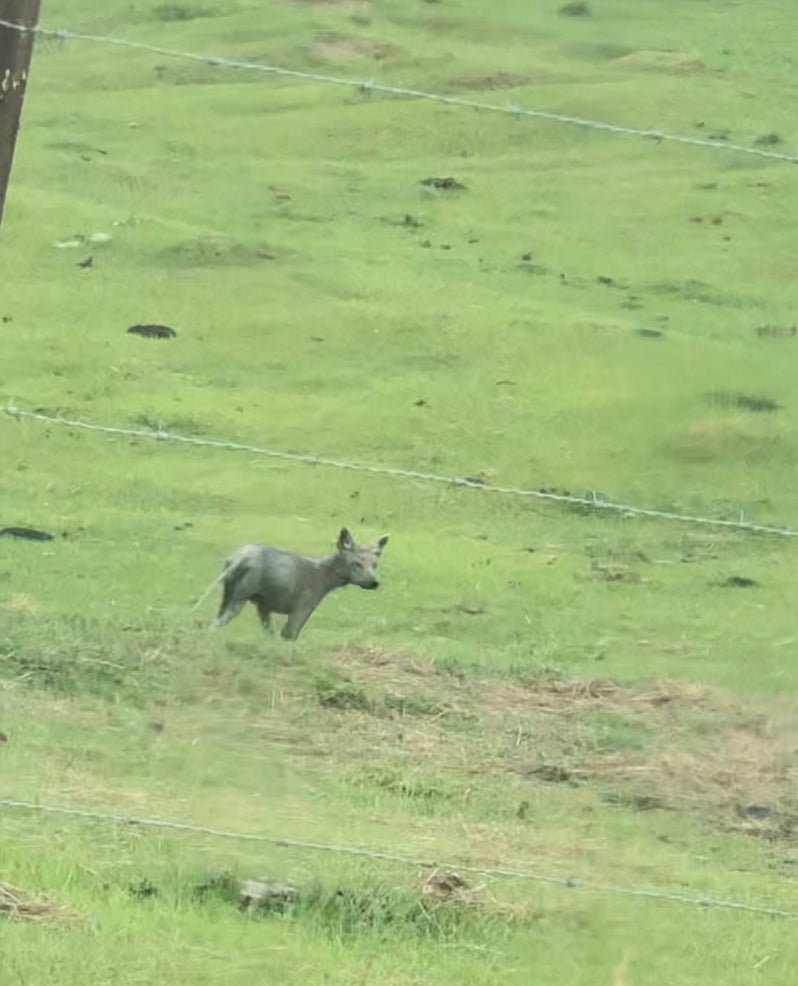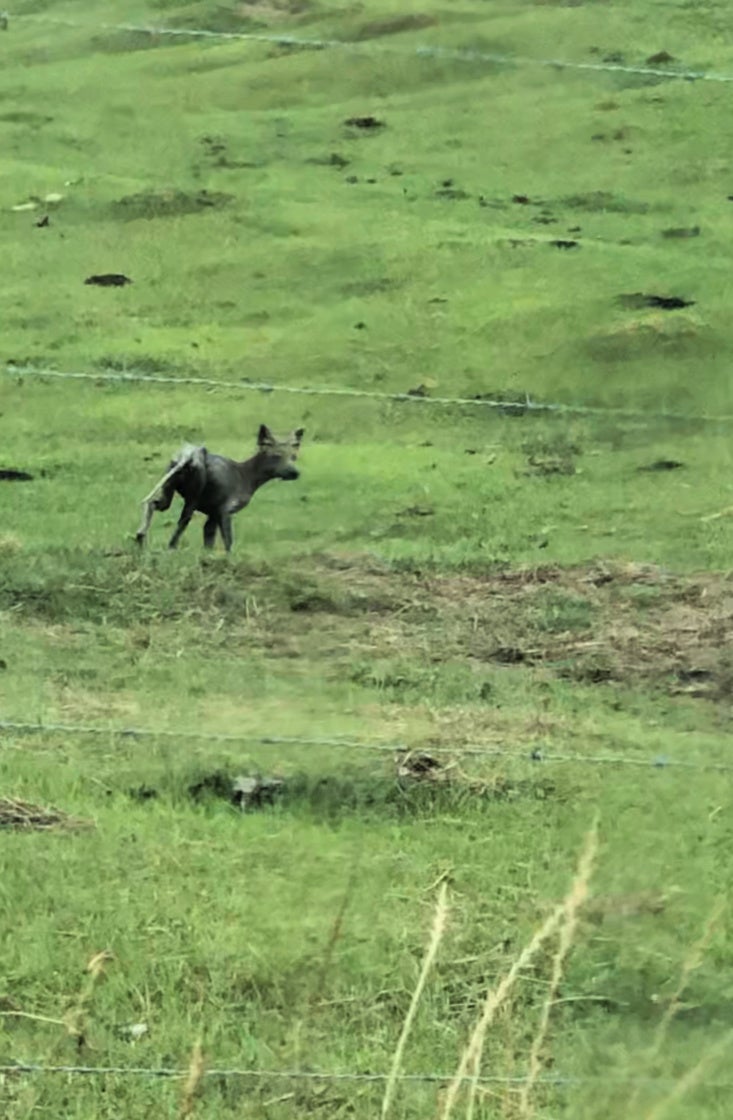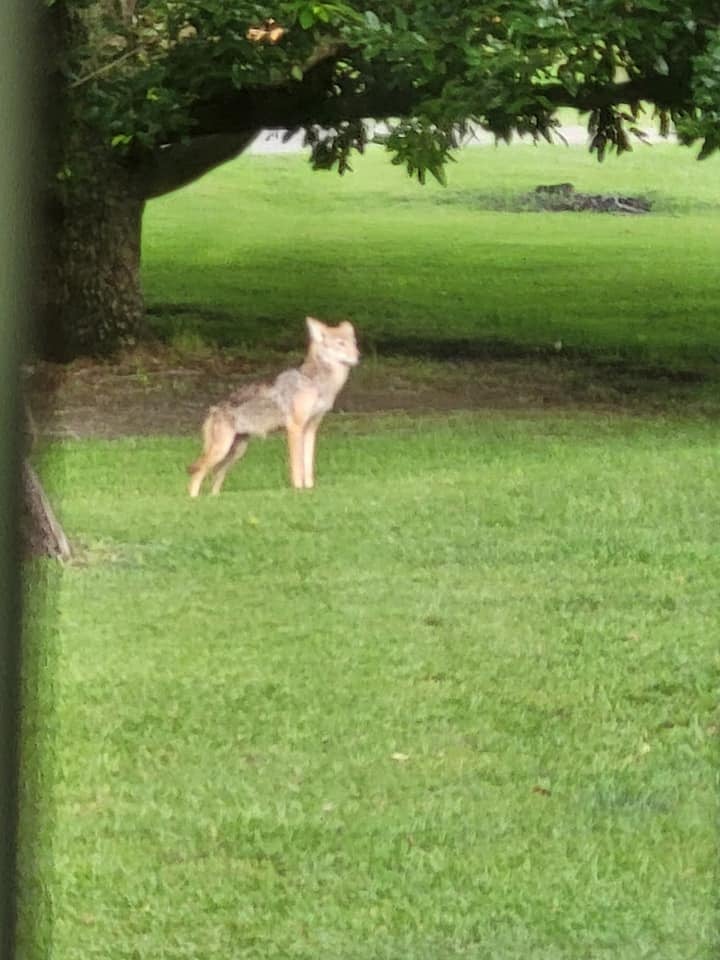Coyote sightings more prevalent across the county
Published 4:05 pm Thursday, June 16, 2022
By Haley Mitchell Godwin
Spring is coyote pup season and often it is a misconception that seeing the animals during the day is an indication that they are sick or rabid. However, particularly with helpless young pups in early spring and summer, coyotes merely have more mouths to feed and thus more foraging to do, but Crenshaw County landowners and citizens have reported more frequent sightings this spring than in past years, including sightings at E.L. Turner Park.
J.D. Richburg, owner of Richburg Farms in Brantley, recently had a close encounter with a coyote that appeared to have the mange.
“It was during the middle of the day, and I was in an open pasture with the tractor running. The coyote snuck up behind me, coming within about 10 yards of where I was standing. It was not normal compared to the coyote activity we usually see out here,” Richburg said.
Hearing coyotes howl is no rare occurrence for Craig Wells of Luverne. He has been hearing howls coming from behind his pond for years. However, two weeks ago a coyote killed one of Well’s free-range turkeys and he now cages them at night.
Although local farmers and Crenshaw County residents may disagree, recent coyote activity in Crenshaw County is nothing out of the ordinary according to Alabama Wildlife and Fisheries conservation outreach coordinator Marianne Hudson.
“We get multiple reports of coyotes year-round. Sometimes residents are more likely to see them moving about during the daytime this time of year because the adults are more active as they are providing food for themselves and their new pups,” Hudson said.
Many of the coyotes spotted in the area appear to have the mange. Hudson said that mange is a common wildlife disease that affects coyotes and multiple other mammal species.
“Some coyotes that contract the mange fully recover, while others become compromised enough that they do not survive. Although domestic dogs can get the mange from coyotes, the bigger concern is keeping domestic animals in such a way that they will not be an attractant to coyotes. Domestic cats and smaller dogs can be a food source for coyotes so if one has free roaming domestic animals, they can expect coyotes to possibly be a predator upon those pets,” Hudson said.
Hudson offered advice regarding how to deter coyotes from one’s property.
“The biggest complaint people have is not wanting to see coyotes on their property. One way that can be mitigated is to reduce attractants around your land. Anything that will attract a stray dog will attract a coyote. Think about things like smelly trash, grills and leaving pet food outside,” Hudson said.
Hudson said people should not be afraid of coyotes. Historically, there are no reports of coyote attacks in the state of Alabama.
When early settlers moved into what became Alabama, they found an untamed wilderness full of powerful toothy creatures. A letter found in the Crenshaw County News, dated May 13, 1915, written by H.D. Brunson, oldest citizen of the county at the time, mentioned wolves being in the area, but not coyotes.
“My grandfather Brunson settled near the edge of the swamp as you come out from Skaines Bridge toward Mt. Ida in the Patsalagi valley. The Indians were here then, and there were hundreds of bears, wolves and panthers. There were a lot of deer, turkeys and fish in abundance, and we could have lived fat, had we had guns and ammunition, but we only had flint and steel guns,” Brunson said in the 1915 newspaper article.
“Mountain Lions were here but likely haven’t existed in Crenshaw in over 100 years,” Wesley M. Anderson, Ph.D. assistant professor & extension specialist with the College of Forestry, Wildlife and Environment at Auburn University, said. “The last one killed in the state was in 1956 in Tuscaloosa Co. Wolves were here too in the 1800s, but no coyotes to be found. At one time we did have red wolves in Alabama, and they would’ve ranged across the entire state. They’re a different species than the gray wolf and used to range from up to Pennsylvania, down through Florida, and out west to central Texas. They’re smaller than the gray wolf but generally larger than coyotes.
”
According to Anderson, the history of coyotes in Alabama is complicated.
“Coyotes were purposely brought into and released in the state starting in the 1920s. People wanted another species to hunt and all the large predators (bear, mountain lions, red wolves) were gone or mostly gone by that time. But they coyote also naturally expanded here from out west. People started to really notice them in the 70s, but it’s possible some of the natural migrants were here before that,” Anderson said.
Anderson said that seeing more coyotes in the area may be due to the animal’s growing population.
“It is generally agreed that coyote numbers are increasing across the state and while coyotes can have mange, it’s suggested that the increased population densities increase the prevalence of mange. So, it makes sense that if numbers are increasing the number of animals seen with mange will also increase. As far as coyote behavior is concerned, if a coyote is curious that’s not so much of an issue, but if it does begin to act aggressively, it’s worth getting a trapper out to deal with the situation,” Anderson said.
A trapper list can be found at http://www.atpca.org/nuisance-trappers-list.html and nuisance wildlife control operators are listed at https://www.outdooralabama.com/nuisance-animal-control/permitted-nuisance-wildlife-control-operators.
D.J. Williams, a trapper from Troy, said that development in counties surrounding Crenshaw County have pushed coyotes this way.
“Coyotes are already overpopulated and with more development going on in the wiregrass area, coyotes are looking for new places to live and hunt. In November and early December of last year, I trapped 38 coyotes in 35 days between Luverne and Goshen. I have received reports of coyotes following alongside people on tractors and the most common complaints come when the animals are eating landowner’s crops,” Williams said.
William’s can be contacted about his trapping service at 334-268-1953.
In Alabama, people can hunt coyotes all year without limit on private lands. Landowners are not required to have a license to kill coyotes on their property during the daytime but must apply for a wildlife control permit to shoot coyotes at night.
For more information, contact Marianne Hudson with the Alabama Wildlife and Fisheries Division at 334-242-3465.








